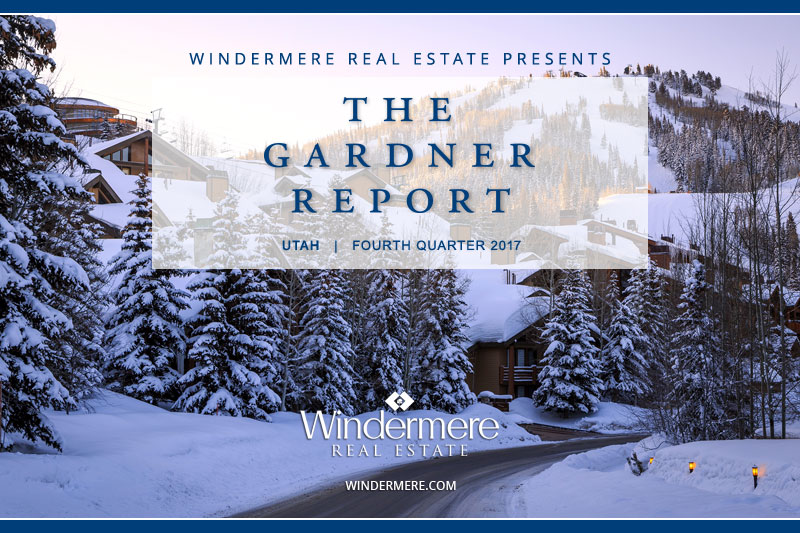ECONOMIC OVERVIEW
The State of Utah added 41,200 non-agricultural jobs over the past 12 months, representing a solid growth rate of 2.8%. Although the area has experienced a slowing in employment gains, the economy is running at full employment, which limits how many new jobs can be created. In last quarter’s report, I forecasted that the pace of employment growth was likely to kick back up during the last quarter of the year, but any substantial gains have, so far, failed to materialize; average monthly job growth is essentially static. That said, we are still waiting for December data and I believe that the final yearly number will be higher.
In November, the unemployment rate was 3.2%, matching the fourth quarter of 2016. With the unemployment rate leveling around 3%, it is unsurprising to see wages rising. The annual rate of pay was up 2.8% over this time last year.
HOME SALES ACTIVITY
- There were 8,529 home sales during the last quarter of 2017, a drop of 1.8% from the same period in 2016.
- Similar to third quarter, sales rose in just two of the counties analyzed in this report: small Morgan County saw sales grow 50% year-over-year—it’s worth noting though that this equates to an increase of only eight units—and there were moderate sales increases in Utah County. Sales fell marginally in Salt Lake and Weber Counties, and a more substantial drop was seen in Wasatch and Davis Counties.
- Home sales continue to be held back by very low levels of available inventory. Listing activity continues to trend at well below historic averages, with the total number of homes for sale in the fourth quarter down 33.7% from a year ago.
- The takeaway from this report is that unless we see a drastic increase in listings, sales growth will continue to remain at below-average levels.
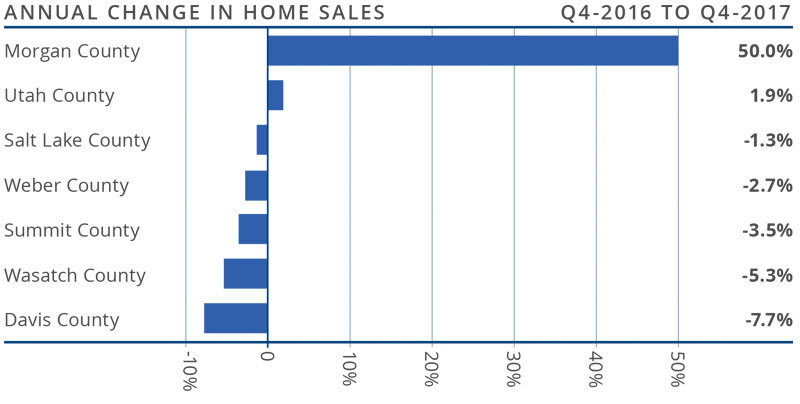
HOME PRICES
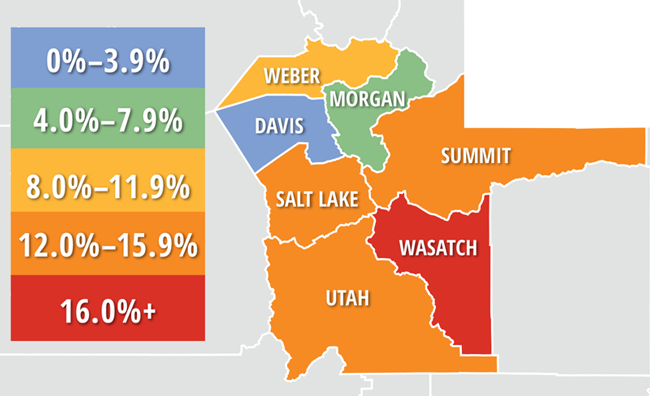 Given the considerable competition for the few homes for sale in the fourth quarter, prices continue to rise at fairly rapid rates. Prices in the region were up 11.6% yearover-year to an average of $342,507.
Given the considerable competition for the few homes for sale in the fourth quarter, prices continue to rise at fairly rapid rates. Prices in the region were up 11.6% yearover-year to an average of $342,507.- Appreciation was strongest in Wasatch County, where home prices rose by 22%.
- Substantial price growth was also seen in Summit, Salt Lake, Utah, and Weber Counties, where prices rose by doubledigit percentage points.
- The imbalance between supply and demand persists, which means home prices continue to appreciate at aboveaverage rates. This is likely to continue for the foreseeable future as inventory levels are unlikely to rise sufficiently to meet demand.

DAYS ON MARKET
- The average number of days it took to sell a home rose by one day when compared to the fourth quarter of 2016.
- It took an average of one month to sell a home in Davis County. Sales were also brisk in Weber, Salt Lake, and Utah Counties.
- During the fourth quarter, it took an average of 50 days to sell a home in the region.
- I believe that the length of time it takes to sell a house will drop back down as we enter the traditionally active spring market. That said, sales will be limited by inventory constraints.
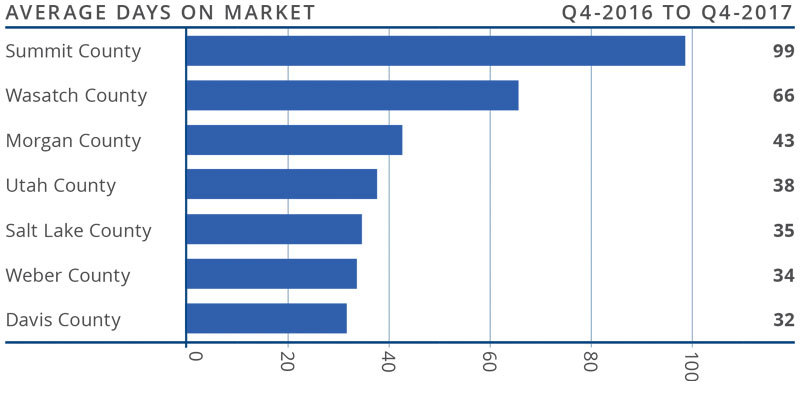
CONCLUSIONS
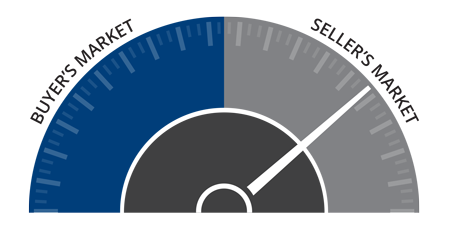 This speedometer reflects the state of the region’s housing market using housing inventory, price gains, home sales, interest rates, and larger economic factors. For the fourth quarter of 2017, I left the needle at the same point as third quarter. Supply issues persist and this continues to create competition for well-priced and well-located homes. The increase we’re seeing in the amount of time it takes to sell a home may suggest that the market is either getting weary of all the competition or buyers are delaying their purchase until there are more homes to choose from.
This speedometer reflects the state of the region’s housing market using housing inventory, price gains, home sales, interest rates, and larger economic factors. For the fourth quarter of 2017, I left the needle at the same point as third quarter. Supply issues persist and this continues to create competition for well-priced and well-located homes. The increase we’re seeing in the amount of time it takes to sell a home may suggest that the market is either getting weary of all the competition or buyers are delaying their purchase until there are more homes to choose from.

Matthew Gardner is the Chief Economist for Windermere Real Estate, specializing in residential market analysis, commercial/industrial market analysis, financial analysis, and land use and regional economics. He is the former Principal of Gardner Economics, and has more than 30 years of professional experience both in the U.S. and U.K.
 Facebook
Facebook
 X
X
 Pinterest
Pinterest
 Copy Link
Copy Link
